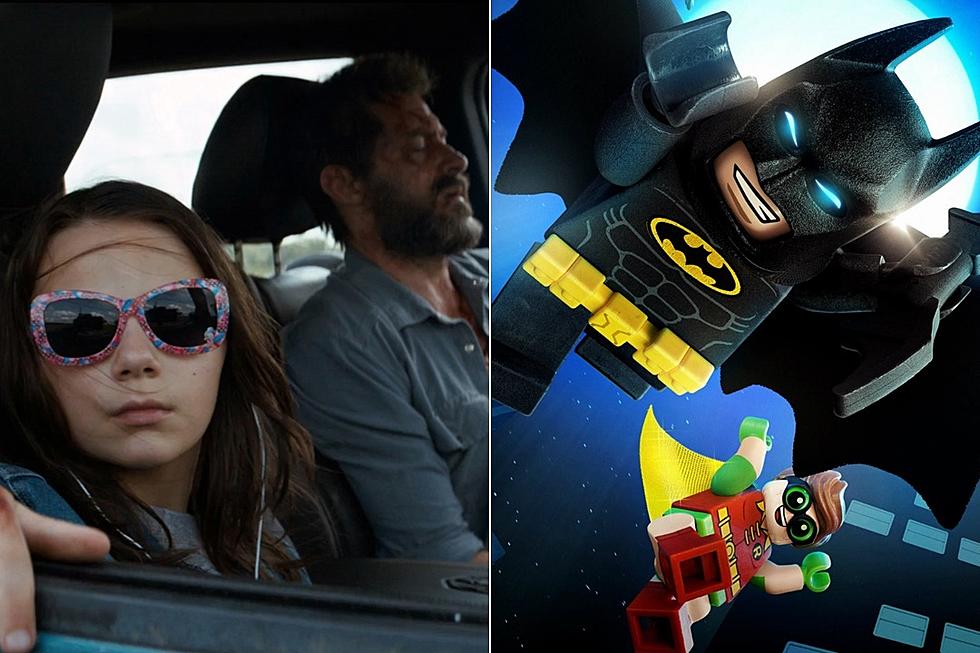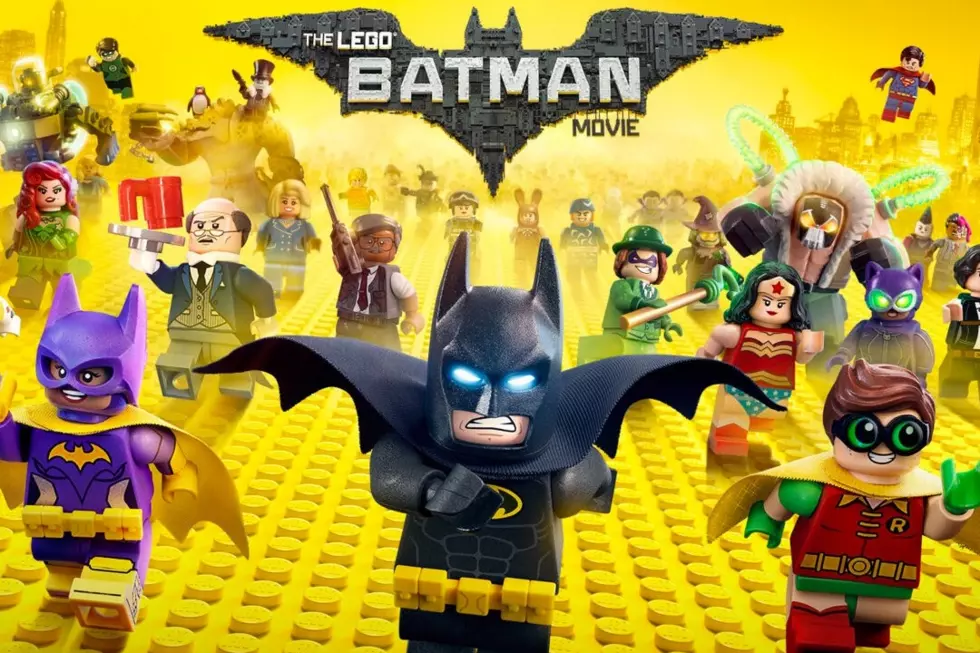
Ask Chris #305: Death Of The Sidekick
Q: There's hasn't been a new sidekick in years. What happened to the concept of the sidekick? -- @RedEarth18
A: I try not to start off a column by disagreeing with the premise of the question, but in this case, I'm not sure that sidekicks are really all that in danger of extinct. I mean, just in the past few years, we've seen Damian Wayne as Robin, Harper Row as Bluebird, and even Duke Thomas as... well, as whatever his role is eventually going to be once he's been put through his accelerated training course.
And even though those are all characters who exist within a single extended family of characters in one corner of superhero comics --- a large corner, but a corner nonetheless --- there are a couple of others out there too. Kid Omni-Man, for instance, is a pretty huge part of the story of Invincible, and that might be the most 21st century superhero comic there is.
But I do think you're right to say that sidekicks aren't as prominent as they used to be, and I think there's a reason for that. And a lot of it has to do with how you define the term.
That's not me being pedantic, either --- or at least, it's not just me being pedantic. There are plenty of characters who have cropped up in recent years that seem like they tick off all the boxes that you'd consider to be requirements for the role. They're derivative of starring characters, they're younger or more inexperienced, they serve as partners and foils --- all of the rules that were established when Robin showed up as the Sensational Character Find of 1940. And yet, when you read those stories, they don't feel like sidekicks.
Most of the time, duos are just that: they're duos, equal partners. Green Lanterns, for instance, isn't a book about Hal Jordan's two sidekicks, even though they're younger and less experienced superheroes who take their orders from him and exist as derivative members of the same franchise. That fits the criteria, but there's both a textual and a narrative difference that sets them apart, and while it's sometimes a difficult line to put into words, it's definitely one of those things where you know it when you see it.
For another recent example, take a look at Duke Thomas. Textually, he's not a sidekick --- Batman explicitly talks about doing something different with him than he has with his past partners:
But narratively? Of course Duke's a sidekick. He's a Robin in everything but name, and he was even one of those not too long ago. But then, if being Robin makes you a sidekick permanently, what about Nightwing? Is he still a sidekick, or is there room for growth? And if Batgirl is a sidekick, which I'm fairly certain she is, what about Oracle? Batwoman is definitely not a sidekick, but she's certainly a derivative character, so is the difference in how they're presented, and whether they can headline their own title? Because if that's it, what about Tim Drake's solo series? That dude has never not been a sidekick!
And it's not just comics, either! Look at Big Trouble In Little China! The whole joke of the entire film is that while narratively, he's the hero, Jack Burton is textually the sidekick! He's both at the same time! How are we going to make this work?!
Like I said, it's a tough one to pin down. So if we're going to get through this, I think we have to go back to the basics. We have to start with Robin.
Because that's the thing about sidekicks, particularly the kid sidekicks that we think of when we hear the term in comics. The role itself might have a history that goes all the way back to Little John and Sancho Panza, but in comics, they pretty much all descend from Robin, in the same way that all other superheroes tend to descend pretty directly from Superman. In an interview where we talked about his truly indispensable The Caped Crusade, Glen Weldon went as far as saying that Robin's arrival as Batman's junior partner "defines the notion of a two-man team" in comics, and he's not wrong.
Robin's influence can't be overstated, because he came at a time when the genre conventions that we're all used to from here in the distant future were still being codified. In 1940, everything was still up in the air, and anything that was successful --- from broad strokes like patriotic heroes and secret identities all the way down to visual signifiers like capes and symbols on the chest --- were copied, refined, and used as the foundation to build the next thing.
As a side note, that's why comics like Stardust the Super Wizard and Dick Briefer's Frankenstein are so fascinating and fun to read, because they represent these weird offshoots into stuff that wasn't copied, and so exist outside of the standard.
Robin, on the other hand, was a huge success. I know that there are a few readers today who have their doubts that anyone would identify with the sidekick over the hero, especially when that hero is Batman, but as someone who spent a lot of time as a kid riding around the neighborhood looking for crime with green dishwashing gloves on my hands and a yellow dish-towel pinned to my shirt, I can confirm that it did in fact happen. As much as people might build up those eight months in 1939 where Batman as a lone avenger and a grim, weird figure of the night up as The Only True Definitive Take, Robin really did complete the story.
And because he resonated so much --- and because Superman had already established that superheroes were the same kind of grow-up Men and Women of Action that were so popular in the pulps --- a ton of other superheroes developed sidekicks overnight. And all of them, from Sandy the Golden Boy to Stuff the Chinatown Kid to Captain Marvel Jr. to Bucky to Sleepy to Speedy, were all just Robin under a different set of clothes.
The thing that's really amazing is that it took another whole decade for Superman to get a kid sidekick of his own, which was long enough for Jimmy Olsen to break out of the established mold and become his own kind of strange.
But really, if we start talking about that, we're going to be here all day.
Suffice to say that while Robin himself was a pretty massive success, and while a few of the others are still around today, the sidekick explosion and most of its associated tropes were, like capes, considered to be more of a product of an era that the superhero genre had moved past.
If you really want to pin their decline on a something specific, though, I think you can lay a pretty big portion of the blame right at the feet of Spider-Man. I've written about it before, but one of the reasons Spider-Man was such a revelation was that Stan Lee and Steve Ditko essentially invented the idea of the teenage superhero, right at the time when the teenager was becoming a defined social and economic construct in the 21st century.
There are a ton of amazing and interesting connotations to that, but one of the biggest is that if you can have young characters --- because the sidekick's most defining trait will always be their youth relative to the hero --- who are themselves the stars of the book, then you don't need to add a second character for younger readers to identify with. And it's especially handy if readers don't mind those characters just constantly talking out loud to themselves about their problems or whatever it is that they're doing.
Also, while we're at it, I'm pretty sure you can blame Spider-Man (and Steve Ditko) for killing the cape, too.
But just because sidekicks aren't the mandatory aspect that they once were, that doesn't mean that they're gone forever, or even that their decline is all that much of a loss. Because the Batman Family is what codified and largely defined the idea of the sidekick for comics --- that is, after all, what makes it the Batman Family --- and because that's a franchise that's pretty popular, they've remained a vital and notable piece of the superhero genre. And that doesn't just mean that we're never going to run out of Robins.
I mean, it does mean that, and by the same token that it's a lot easier to introduce new characters who fill that sidekick role to that corner of comics than it is to throw them into pretty much anywhere else --- but it also means that the sidekick is part of the common language of superhero comics. Because of Robin and all of his conceptual descendants, whether they stuck around or not, we all sort of understand what they are, and that makes it easy to play with and subvert those tropes.
It's why Kid Omni-Man works. It's why Astro City has done stories like Confession. It's why Danger Club, a book that focuses exclusively on sidekicks in the absence of heroes, works as well as it does. And it's why Damian Wayne worked so well as Dick Grayson's Robin --- the sidekick to a sidekick who became a hero. They're still there, and they can still work.
More From ComicsAlliance




![A Jealous Robin Heads To Bludhaven In ‘Nightwing’ #16 [Exclusive Preview]](http://townsquare.media/site/622/files/2017/02/NTW_Featured.jpg?w=980&q=75)




